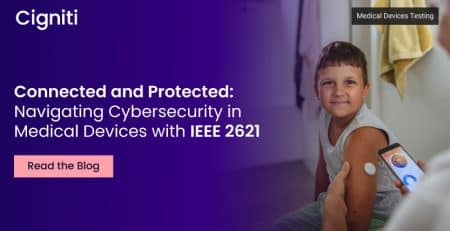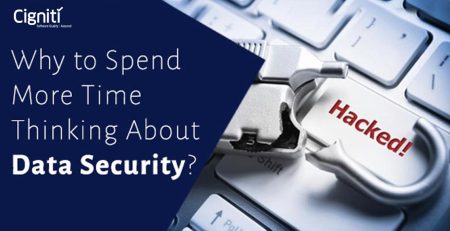Biometric Data Security: To Secure Your Customers’ Personal Data
|
Listen on the go!
|
Amazon is reportedly testing a hand-scanning payment technology for escalating the checkout process at its Whole Foods outlets. Such a system will have the capability to complete a payment in less than 300 milliseconds. The hand-scan system leverages biometric information for payment authentication to eliminate the need for a card or even touching the POS.
In China, WeChat has recently launched a payment device that allows customers to pay using their facial identity. This new POS device, “Frog Pro,” was launched at the Chongqing Smart China Expo two weeks back. With a promise of making payments safe, fast, and convenient, WeChat rolled out Frog Pro to upgrade its offline payments.
With the technological advancements in AI, voice recognition, facial recognition, depth geometry, and computer vision, the perils of identity theft have reached new heights.
Consumers today are standing at the crossroads with safety on one side and convenience on the other. To enjoy hassle-free and quick transactions, they are required to divulge sensitive personal information to the facilitators. With the alarming rate at which cybersecurity attacks are increasing in breadth and depth, data sharing has become hazardous.
While biometric technology is associated with the immutable physiological characteristics of customers, the theft of biometric data poses an equally serious threat. As per a ForgeRock report, in the 342 data breaches of 2018, 97% of the attacks were intended for Personally Identifiable Information (PII) of customers. Data records of over 2.8 billion customers were exposed in these breaches, costing an estimated total of $654 billion.
Biometric authentication is not a novel security method. Statista reported that over 75% of consumers have used some sort of biometric technology, ranging from fingerprint scanning and facial recognition to signature dynamics and hand geometry. In fact, fingerprint scanning has been one of the most widespread uses of biometrics for authentication and verification. The latest smartphones, including iPhones and Android phones, use facial recognition and fingerprint scanning technologies to grant user access. By the end of 2019, 100% of all new smartphone shipments are expected to feature biometric technology.
As of now, biometrics are the most secure form of authentication available. Regarding safety level, it towers over first-factor authentication of physical identity cards and second-factor authentication of knowledge about a life event. However, being extremely safe does not translate into being unbreachable. The pros of a biometric authentication system are heavier than the cons. Consequently, the biometric security market is growing at a CAGR of 18% and is expected to be worth $32 billion by 2023. According to a Ping Identity Survey, about 92% of enterprises rank biometric authentication as an “effective” or “very effective” way to secure identity data stored on-premises.
Amidst the glory and acclamation for being impenetrable, the news of the Biostar 2 data breach broke out. The breach compromised biometric information, including fingerprints, facial recognition records, and authentication credentials, among other personal details of over 1 million users. This attack cleared the false sense of security that comes with using biometric authentication.
In most cases, the independent data is useless to hackers or data thieves unless the biometric identity links back to a person. Even then, any hole in the security system will cause a two-way blow – on the reputation of businesses storing the data and the security status of the customers whose data is stolen. To ensure that companies deliver convenience to customers without compromising their safety, they must follow these best practices.
Some of the best Biometric Data Security Practices
1. Encrypt the data
When a vulnerability in Facebook’s security system revealed hundreds and thousands of passwords lying in plain sight, the focus was centered on the criticality of encrypting the stored data. However, it is easy to change a password in case of a breach. How will the customers change their biometrics after the theft? Thus, doing everything to prevent biometric theft becomes all the more critical. If the stored biometric information is encrypted, an attack will not cause significant damage.
2. Establish governance
Before storing customers’ personal, sensitive information, it is necessary to have a written code of conduct or governance policy in place. Such a policy should dictate the terms regarding biometric data storage, access, usage, and distribution. Unnecessary, additional information should not be gathered. The information collected should not be stored beyond the point of use. It should, under no circumstances, be distributed or shared without the proper authorization and permission of the customers.
3. Secure the system
Creating a secure system is the first step to safeguarding customers’ biometric PII. The interconnected web of IoT devices exposes any enterprise to many threats and cyber vulnerabilities. The security plan should be comprehensive, considering all the physical, electronic, and digital aspects of wherever the biometric information is stored. Everything should be closely monitored, from mobile devices, computers, and laptops to servers and software. A periodic password-change policy should be incorporated into the security plan.
4. Be prepared
Although securing the systems proactively is part of being prepared. Yet, if a breach does happen, have a response strategy ready to minimize the losses. Form a risk assessment plan that constantly supervises the system for any holes and gaps in security and alerts the concerned authorities in real time in case of a breach. Train the employees and educate them regarding compliance protocol for maximum protection.
In Conclusion
Drew Bates, Head of Product Marketing at SAP Innovation Lab, says, “Sure, there are valid concerns about intrusion and privacy regulations, but follow the rules (such as full disclosure, opt-in, and appropriately handled personal data storage) and the results will be a transparent system which only succeeds if it provides value to the individuals concerned.”
One can never be too cautious when it comes to cybersecurity. It is advisable to deploy all the possible measures. The most important thing is to monitor the security system regularly. Enterprises can quickly prevent data breaches by checking the vulnerabilities and security gaps.
Cigniti possesses rich expertise in Security Testing of enterprise applications, catering to diversified business needs. We have immense experience serving clients across different industry verticals and organization sizes. We offer end-to-end security testing services, including Network Penetration Testing, SCADA Network Vulnerability Assessment and Penetration Testing, Web Application Penetration Testing, Wireless Network Assessment and Penetration Testing. Connect with us and get your security issues resolved.





Leave a Reply